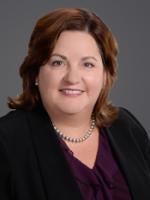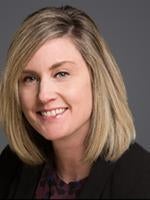On March 28, 2019, the U.S. District Court for the District of Columbia struck down key parts of the U.S. Department of Labor’s (DOL) final rule expanding the availability of association health plans (AHPs). In State of New York et. al. v. United States Department of Labor, Judge John Bates determined that the DOL exceeded its regulatory authority and found that the final rule constituted an “end-run around the [Affordable Care Act]” with the purpose of “avoid[ing] the most stringent requirements of the [Affordable Care Act].”
The final rule, issued in June 2018, expansively reinterpreted the DOL’s prior guidance on the definition of “employer” under the Employee Retirement Income Security Act of 1974 (ERISA) and significantly broadened the opportunities for small businesses to participate in AHPs. It also allowed self-employed individuals without employees to be treated as employers under ERISA and therefore to participate in AHPs for the first time.
In July 2018, 11 states (California, Delaware, Kentucky, Maryland, Massachusetts, New Jersey, New York, Oregon, Pennsylvania, Virginia, and Washington) and the District of Columbia sued the DOL claiming that the final rule exceeded the DOL’s authority and violated the Affordable Care Act and ERISA.
Central to the final rule, and to Judge Bates’ opinion, is the definition of “employer” under ERISA for purposes of sponsoring and participating in an AHP. In considering the states’ challenge to the final rule, Judge Bates focused on two aspects of the DOL’s expanded interpretation of what constitutes a “bona fide association” of employers that is deemed to be a single “employer” within the meaning of ERISA. First, under its pre–final rule advisory opinions, the DOL required a group of employers to be tightly bound by a common “economic or representational interest” in order to be considered a single employer. The final rule loosened that requirement, allowing employers that share only common geography to form a “bona fide association.”
Likewise, before the final rule, in order to be a “bona fide association” of employers, the group must have been formed for some business purpose unrelated to the offering of health coverage. The final rule relaxed this requirement, allowing a “bona fide association” to be formed solely for the purpose of offering an AHP, as long as the association also has at least one other legitimate business purpose—for example, offering training classes or publishing a newsletter on issues of interest to the group of employers.
Judge Bates concluded that these aspects of the final rule would result in groups of employers that lacked any real commonality of interests being treated as a single employer under ERISA and that the final rule therefore failed to set “meaningful limits on the types of associations that may qualify to sponsor an ERISA plan.” As such, the court determined that these portions of the DOL’s final rule are unreasonable interpretations of ERISA and must be vacated.
The court also expressly rejected the DOL’s inclusion of a working owner without common law employees in the definition of an “employer” that may participate in an AHP. According to Judge Bates, that interpretation is a violation of ERISA and congressional intent because it unreasonably seeks to expand ERISA coverage to plans clearly outside of the employment context.
Judge Bates noted that the final rule contained a severability provision that expressly provides that any provision found to be invalid will not affect the remainder of the law. Therefore, upon ruling that the offending portions of the final rule are invalid, he sent the remainder of the final rule back to the DOL to determine whether the rest of its provisions could survive in light of the severability provision. The DOL issued frequently asked questions regarding the effect of the court’s decision, reaffirming state oversight of AHPs and reiterating that AHPs have an obligation to provide the benefits promised to participants, notwithstanding the outcome of the case. While it disagrees with the court’s ruling, the DOL has not yet decided whether to appeal the decision, stating that it “is considering all available options in consultation with the Department of Justice.”
Following issuance of the final rule in the summer of 2018, many new associations formed in order to offer AHPs. This ruling leaves those plans, and all individuals enrolled in them, in limbo, pending further developments.





 />i
/>i
